Hunting with a muzzleloader might conjure images of a coonskin-capped, buckskin-wearing mountain man traipsing through thick woods, but in today’s advanced hunting culture, a muzzleloader can be a tool that extends your hunting season and opens up new opportunities for drawing hard-to-get tags in iconic states.
In this article on muzzleloader hunting, we’ll cover how to get started, key differences between different types of muzzleloaders, a few personal reflections from muzzleloader hunters, and the ever-changing landscape of regulations around them.
Getting Started Muzzleloader Hunting
“I got started hunting with a muzzleloader in my thirties,” says onX Product Manager Matt Seidel. “I wanted to expand my opportunities and my season. I knew it would give me better chances for tags, especially in states like Nevada, Arizona, or New Mexico.”
Shooting a muzzleloader can be intimidating at first. It’s a big change. If you can find someone who has one you can shoot first, do that.
Taking up muzzleloading can be challenging and rewarding. Like any new hobby, it’s best to start with research.
“Shooting a muzzleloader can be intimidating at first,” says Seidel. “It’s a big change. If you can find someone who has one you can shoot first, do that. Otherwise, there’s a lot of information on hunting forums, YouTube, and muzzleloader manufacturer websites. Learn what tools you’ll need for your firearm, how to use them, and then carry them.”
Though it might be tempting to think that hunting with a muzzleloader is pretty much the same as hunting with a high-power rifle, it is not. The learning curve can be steep, but it is achievable.
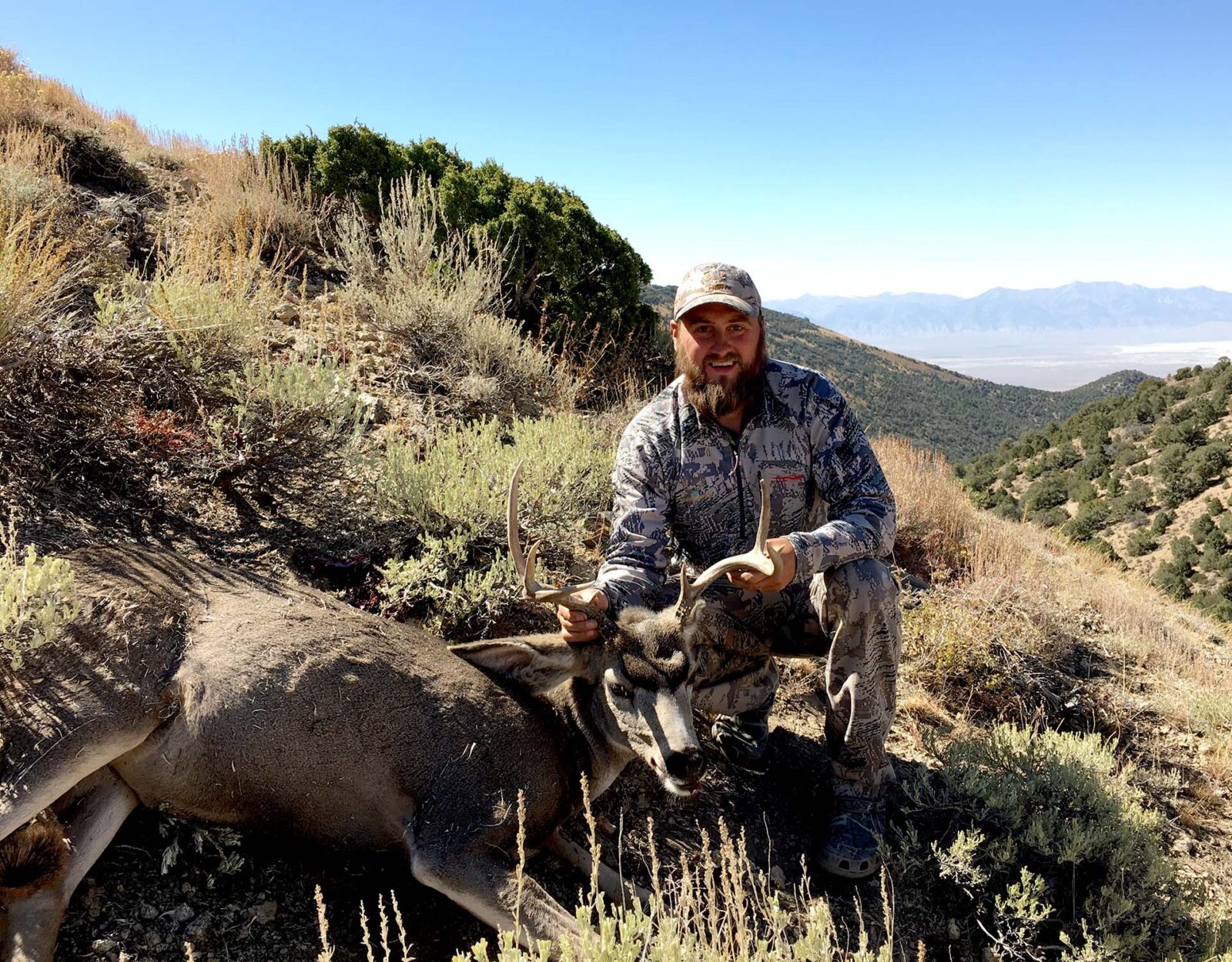
Most of the challenges of taking up muzzleloading are:
- Understanding how to load the firearm properly, from measuring and pouring the right amount of gunpowder, seating the bullet/ball/projectile, and properly placing the percussion cap or primer to ignite the powder.
- Mastering accuracy and ballistics. In most cases, a hunter has one shot with a muzzleloader for a deer or elk, and typically at a much shorter effective range than when using a high-power rifle.
Cleaning and regular maintenance. The substances hunters use for muzzleloaders are corrosive, and these firearms must be cleaned diligently and regularly. This involves disassembling parts, scrubbing with specialized solvents, and lubricating components.
Why Start Muzzleloader Hunting?
According to the National Deer Association, deer harvests by muzzleloader represent just 10% of total harvests in the East and only 5% in the West. Though this indicates that muzzleloading is harder than archery and rifle hunting, it also means fewer hunters use them. Here lies the true opportunity behind taking up the sport.
“I bought a muzzleloader when I was in high school in Minnesota so I could hunt deer for an extra 16 days,” says onX Masterclass Host Jack Hedlund. “I bought a Thompson Center and it came with an instructional DVD. What I learned is that you have to clean them really well.”
Most often it’s the additional days in the field that attract hunters to purchase and learn the muzzleloader; plus they are pretty inexpensive.
Some people enjoy the primitive hunting aspect of hand-loading a lead ball into the barrel and pouring just the right amount of powder for each shot. These hunters also take to the challenge of knowing they likely only have one shot at the animal at a reasonably close range. Muzzleloaders can epitomize the concept of fair chase.
Others enjoy the project of building their own muzzleloader from one of the many kits available online or at local retailers. It is considerably easier to build one of these firearms than building a high-precision, center-fire rifle.
But extra days in the field when there are far fewer hunters out there seems to be the most intoxicating draw to muzzleloaders.
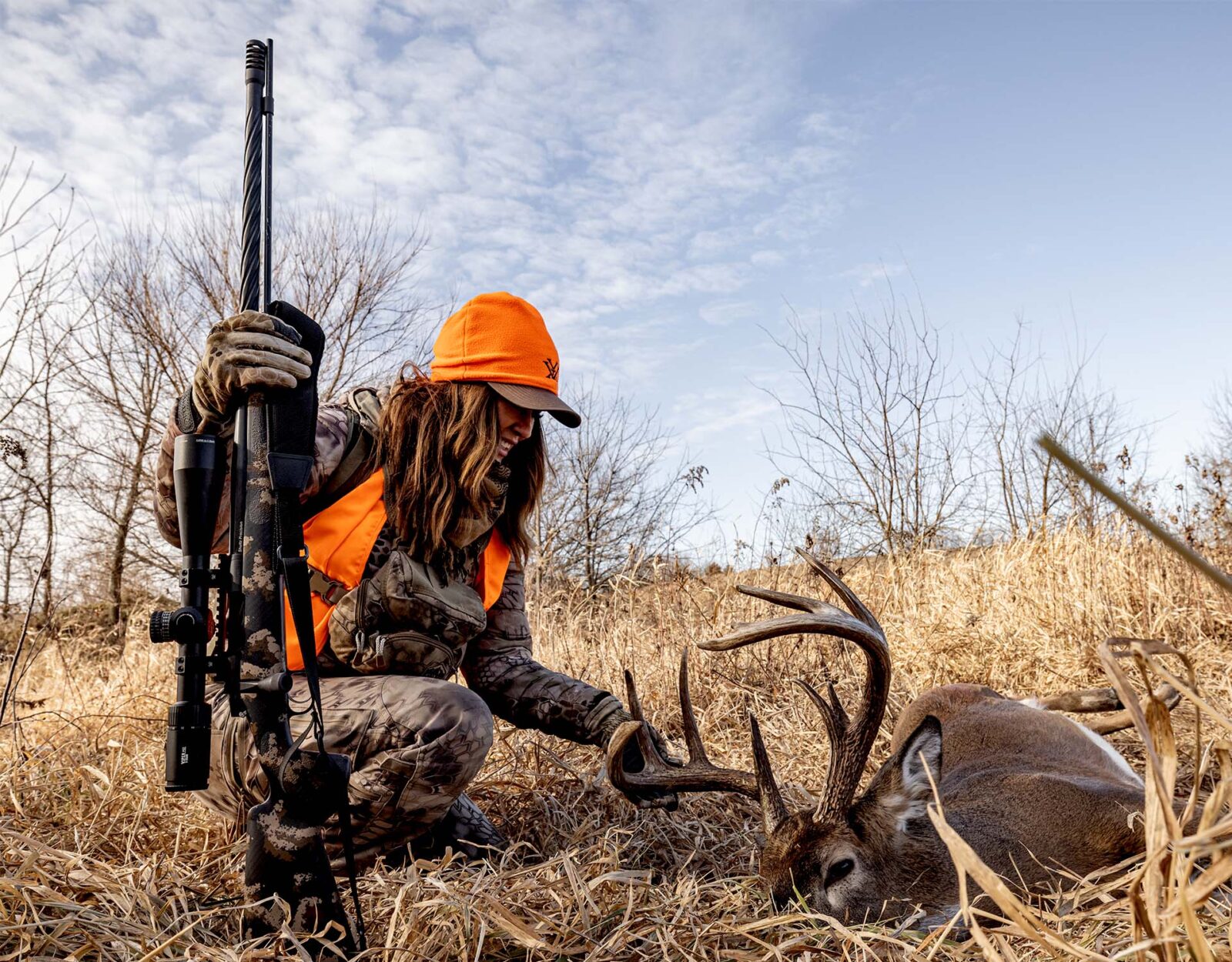
But extra days in the field when there are far fewer hunters out there seems to be the most intoxicating draw to muzzleloaders. Seasons vary drastically from state to state, with some seasons coming before general rifle season, or after, or during, or even during peak rut times for deer or elk.
A handful of states also allow for antelope hunting with a muzzleloader, including Montana, Colorado, Wyoming, plus a few others. Huntin’ Fool has an in-depth article about antelope all over the United States and includes muzzleloader information.
As previously mentioned, muzzleloader hunting might open up better draw odds for coveted big game tags in excellent hunting states.
A few of the most important things to keep in mind about diving into the world of muzzleloader hunting include:
- What are the muzzleloader type restrictions in place for the state(s) you want to hunt? Some states don’t allow optics over a certain power. Some don’t allow them at all. Many have restrictions for the type of powder (loose or pellets) one can use, or which primers, projectiles, wads (sabots, for example), and caliber sizes are legal.
- When are the season dates? And are the muzzleloader seasons exclusive to muzzleloading or do they also allow bowhunters or shotguns? Are they only allowed in certain hunting zones or game management units? What temperatures and corresponding animal behavior are expected? In Montana, for example, there is a heritage muzzleloader season in mid-December when it can be freezing, moving animals to places they can easily find food sources.
- How far can you comfortably shoot a muzzleloader, especially if you are restricted to open iron sights? The generally accepted effective range for shooting an elk with a muzzleloader is up to 150 yards, and for deer hunting it is up to 100 yards (though some technology can make 300-500-yard shots possible).
Muzzleloader Design
A muzzleloader, by design and definition, is a firearm that is loaded through the muzzle (i.e., the open end of the barrel) of the gun. The concept of the gun is to load in gunpowder, then a patch or shooting wad (which builds the proper pressure when the powder is ignited) and a projectile (round lead ball, conical bullet, etc.). Then a primer cap is loaded behind all those components that, when struck, ignites the powder and sends the bullet on its way.
The mechanics of the muzzleloader are fairly simple, but the components and gun styles vary widely.
There are three main types of muzzleloader rifles you might find: Flintlock, Percussion: Cap Lock (also known as Side Lock), and Modern Inline. Again, some states only allow for specific types of muzzleloaders to be used for hunting purposes.
Three popular calibers of these guns are .45, .50, and .58 caliber. Sometimes the wad, called a sabot, is already attached to the projectile, but in some states those types of sabots are illegal.
The mechanics of the muzzleloader are fairly simple, but the components and gun styles vary widely.
Muzzleloaders come with a ramrod, which is used to push the wad and projectile down the barrel, seating it over the powder.
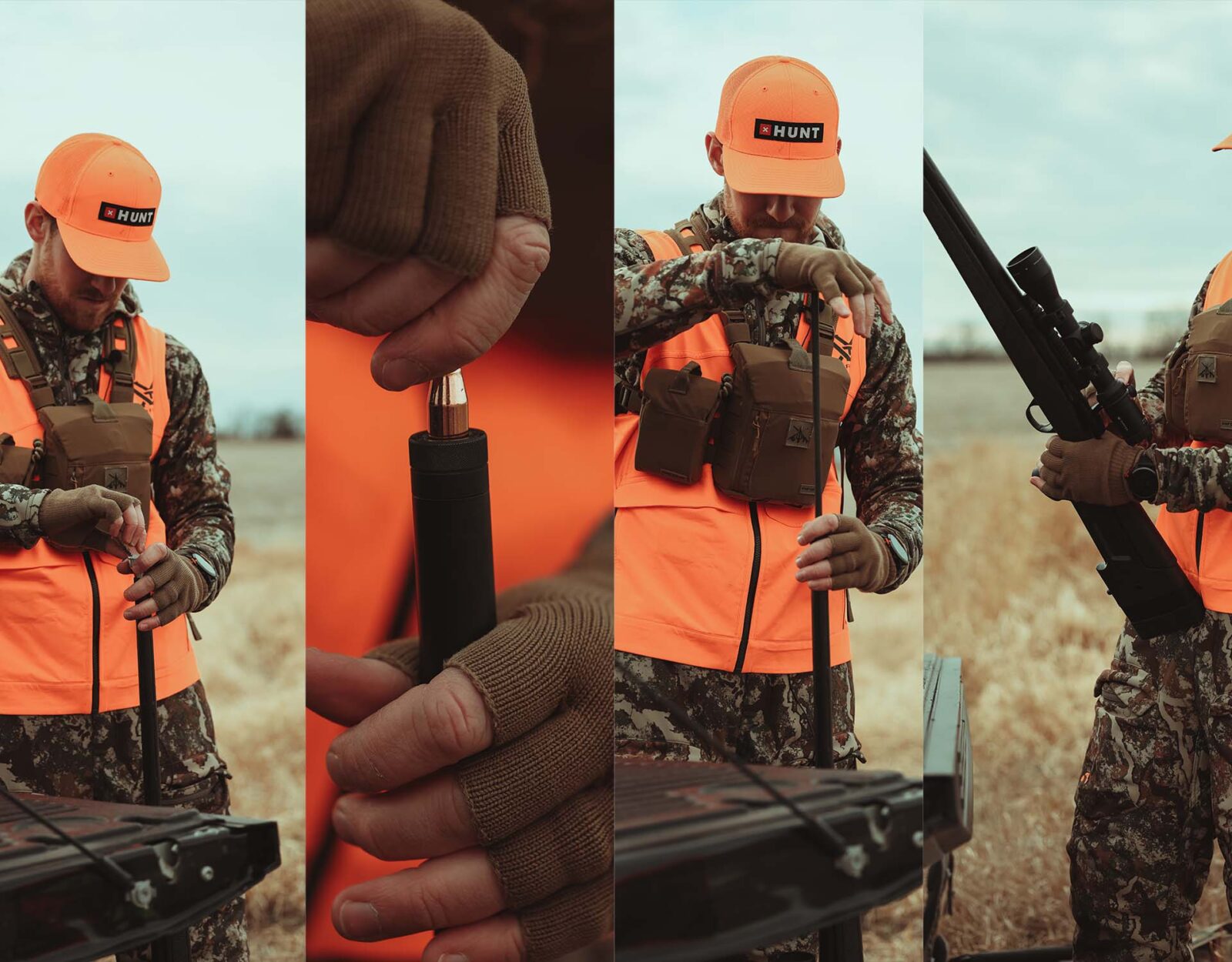
How To Load a Muzzleloader
Loading a muzzleloader requires a specific process. Here are the three basic steps:
1. Powder Loading:
- Measure the powder charge: Use a powder measure to pour the correct amount of black powder or black powder substitute.
- Pour powder into the barrel: With the muzzleloader’s barrel pointed upward, pour the measured powder down the barrel.
2. Projectile Loading:
- Seat the projectile: Place a patched round ball, conical bullet, or sabot over the barrel’s muzzle.
- Ram the projectile down: Use the ramrod to firmly push the projectile down the barrel, seating it securely on top of the powder charge.
3. Priming the Firearm:
- Prime the muzzleloader: Place a primer in the ignition system, such as a percussion cap on the nipple or a 209 primer in the breech, or for a flintlock, prime the pan with fine powder.
- Ready to fire: The muzzleloader is now loaded and ready for shooting after cocking the hammer.
Of course, each of these steps should be done with care and attention to safety, ensuring the firearm is properly loaded without air gaps and that you follow all safety procedures.
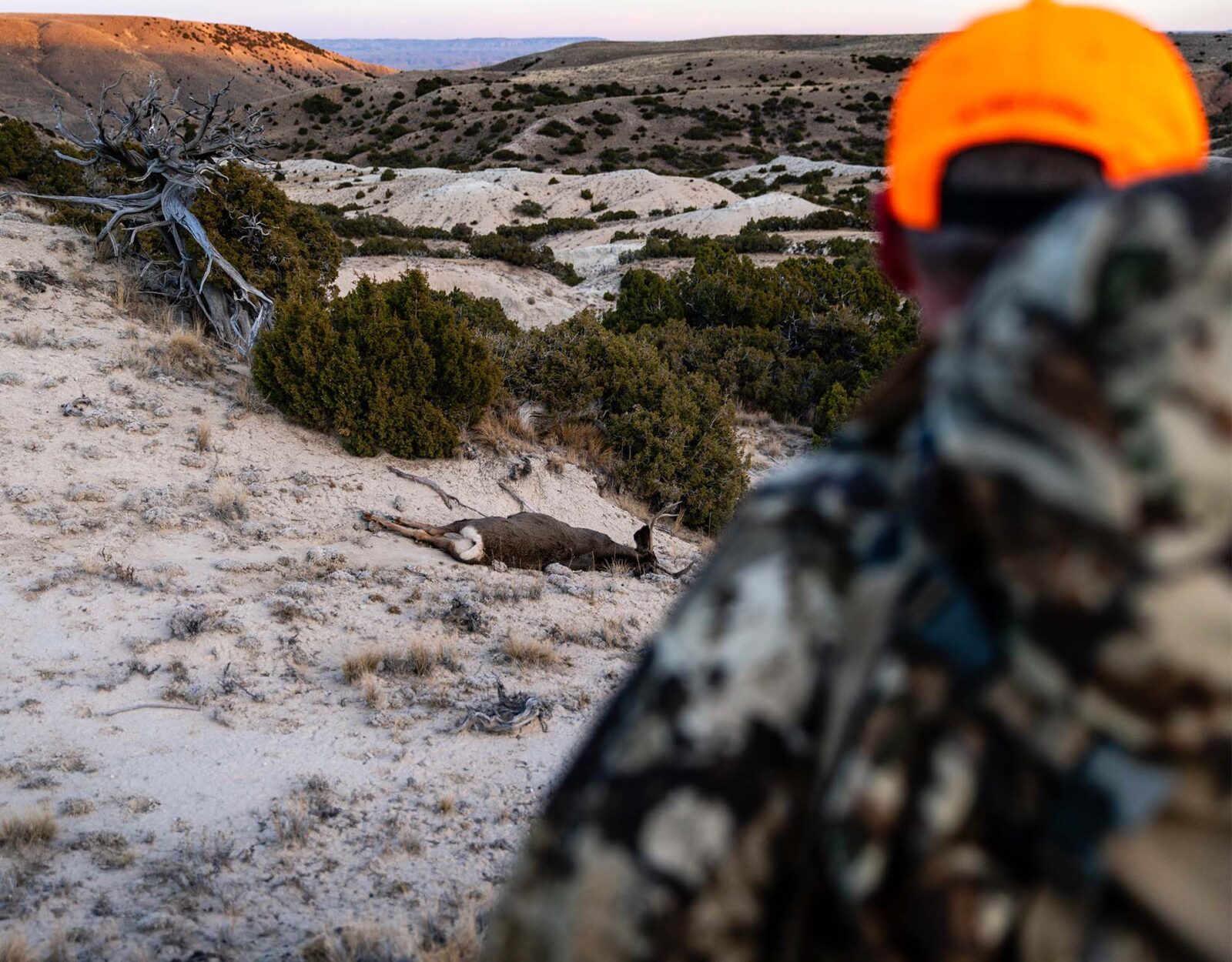
Muzzleloader Hunting Regulations
As with all hunting regulations, muzzleloader regulations are liable to change. Muzzleloader seasons have seen changes in both directions, meaning some states have made muzzleloader season more restrictive while other states have reduced restrictions. The first and best place to check for your state’s regulations is your state’s wildlife management department.
Some notable changes in the last few years include:
- Utah banning scopes over 1x power heading into the 2024 hunting season.
- Arkansas expanding the types of firearms allowed during its new Alternative Firearms Deer Hunting Season, letting hunters use straight-walled cartridges in .30 caliber or larger to be used alongside muzzleloaders.
- Michigan opening its Zone 2 to allow all types of firearms during muzzleloader season.
- Montana opening a new “Muzzleloader Heritage Season,” a nine-day season in mid-December for hunters with unfilled tags left over from the general rifle season. The “Heritage” part means that only muzzleloaders that use loose powder, lead-only bullets, and external hammers on the side of the firearm or flintlocks to strike the percussion caps are allowed.
- Idaho expanding the types of bullets allowed for muzzleloaders. Previously only all-lead projectiles were legal, but now hunters can load other metal alloys.
As you can see, there is a lot to keep up with in terms of muzzleloader regulations. Always double-check what’s allowed where you plan to hunt.
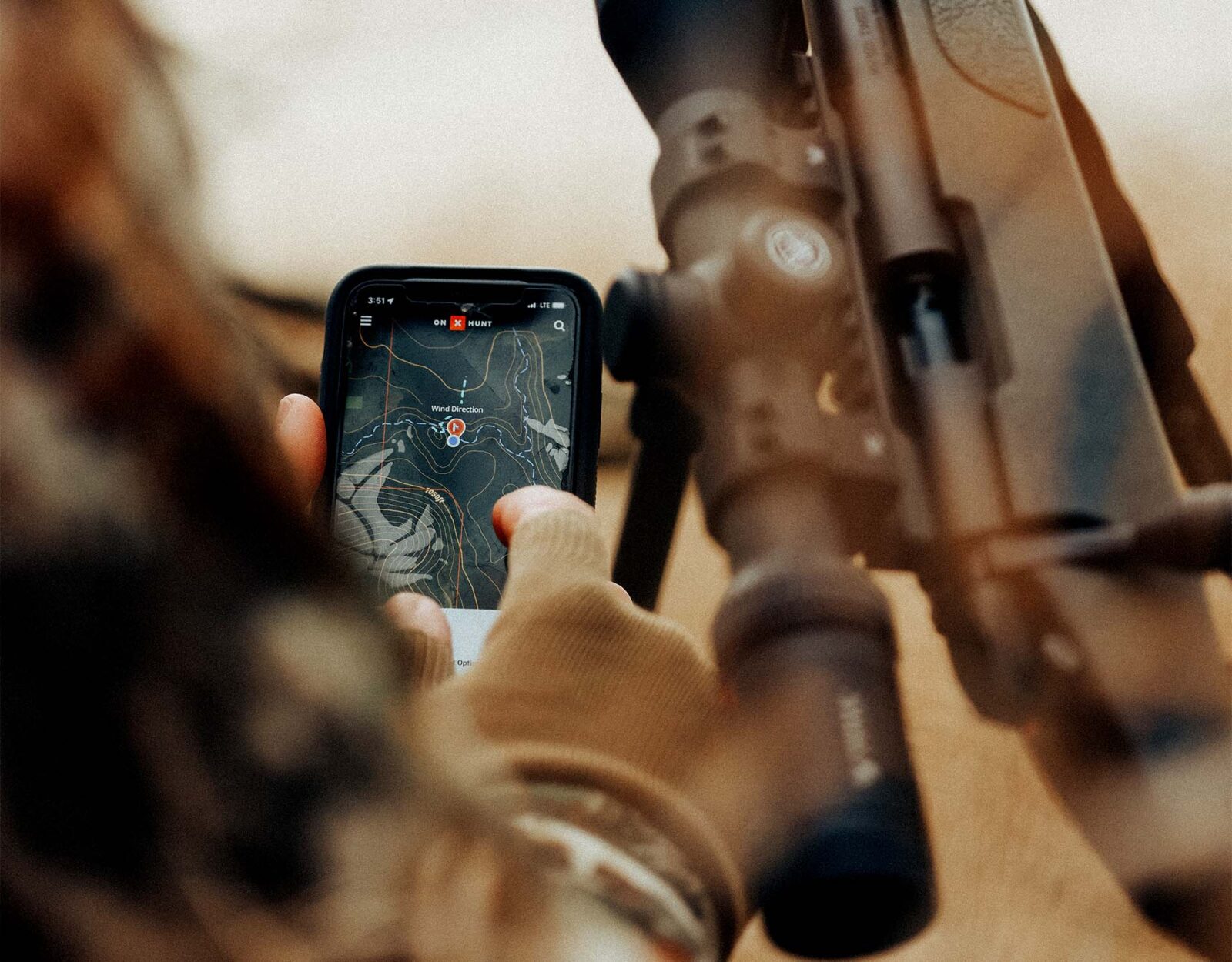
onX Features for Muzzleloading Season
It’s already been said but bears repeating: Hunting with a muzzleloader is an up-close-and-personal style of hunting akin to archery. The one shot you take will likely be at a distance of 100 yards or less, making factors like wind, scent, and shooting lanes make-or-break elements of success
The Hunt App’s Optimal Wind tool allows you to mark a Waypoint, like a treestand or ground blind, and set the optimal wind conditions for hunting in that spot. With Optimal Wind settings in place, you can choose your best hunting spot the day-of or days in advance by seeing where the wind will blow in relation to your Waypoint.
Another useful feature for muzzleloaders is the Line Distance tool. Figuring out the exact distance between two points is as easy as placing two fingers on the map. If you have a potential shooting lane or need to know the maximum distance across a field or food plot, you can measure it before you put boots on the ground with the Line Distance tool. Then you’ll know what hunting areas have the best ranges for your one shot.
Good luck out there, and get after it.